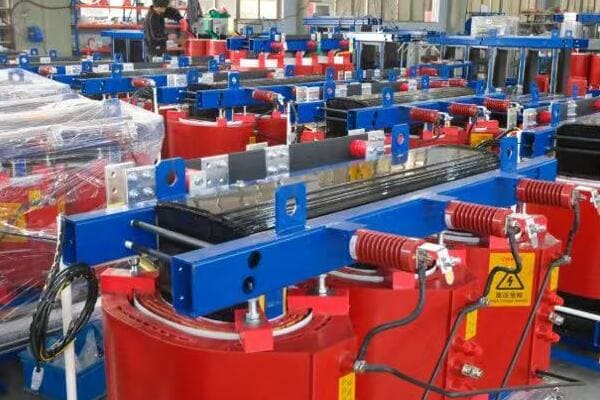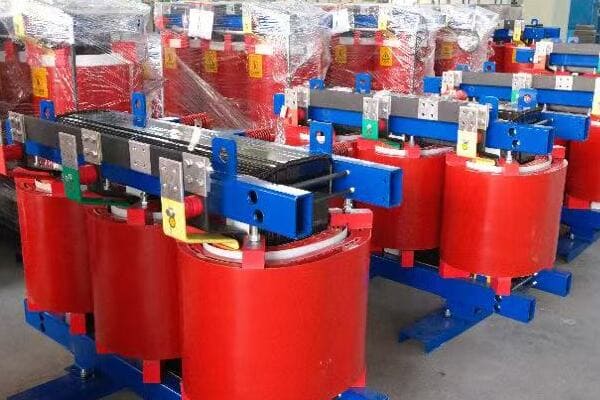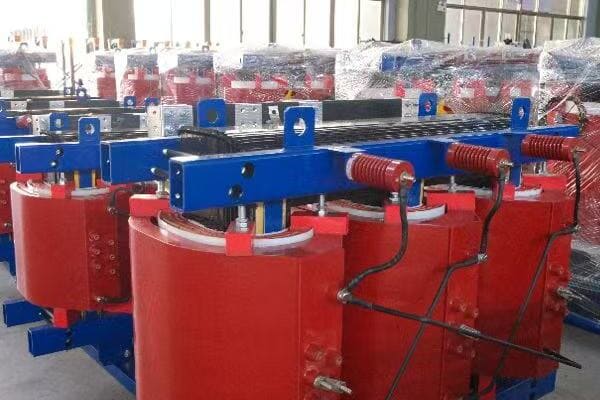Transformer Purpose and Pricing: What Buyers Should Know Before Making a Purchase?
Are you struggling to understand transformers and their pricing? You’re not alone. Many buyers find themselves overwhelmed when it comes to selecting and purchasing the right transformer for their needs. But what if you could make an informed decision that saves you both time and money?
A transformer is a device that changes voltage levels to safely distribute electricity across industrial and commercial systems. Buyers should understand its purpose, cost drivers, and selection criteria before making a purchase decision.
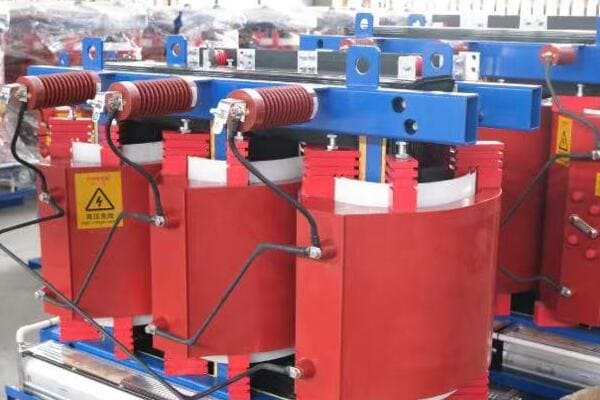
In this article, I’ll guide you through the key aspects of transformer purpose and pricing. We’ll explore the factors that influence costs, compare different types of transformers, and provide tips for making a smart purchase. Whether you’re a facility manager or a project engineer, this information will help you navigate the complex world of transformer procurement.
What Is the Purpose of a Transformer in Industrial and Commercial Projects?
Have you ever wondered why transformers are so crucial in industrial and commercial settings? These devices may seem simple, but they play a vital role in powering our businesses and factories. So, what exactly do transformers do in these environments?
Transformers in industrial and commercial projects serve to adjust voltage levels for efficient power distribution and equipment operation. They enable the safe step-down of high voltage from utility lines to usable levels for machinery, lighting, and other electrical systems within facilities.
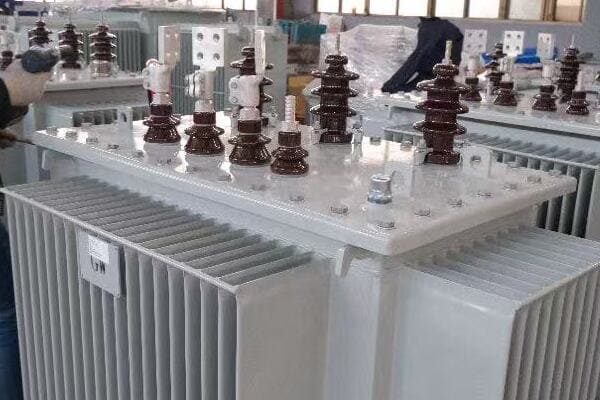
Understanding Transformer Functions in Industrial Applications
Let’s dive deeper into the specific purposes of transformers in industrial and commercial settings:
1. Voltage Adjustment
Transformers primarily:
- Step down high voltage from power lines to usable levels
- Step up voltage for specific high-power equipment
- Maintain consistent voltage for sensitive machinery
I once worked on a project for a large manufacturing plant where the incoming utility voltage was 13.8kV. We used a series of transformers to step this down to 480V for most of the plant equipment, and further down to 240V and 120V for office areas and lighting. This voltage adjustment was crucial for the safe and efficient operation of all systems within the facility.
2. Power Distribution
In large facilities, transformers help:
- Distribute power efficiently across vast areas
- Reduce power losses in long cable runs
- Enable separate power systems for different departments or processes
3. Isolation and Safety
Transformers provide:
- Electrical isolation between primary and secondary circuits
- Protection against voltage spikes and surges
- Grounding options for enhanced safety
4. Power Quality Improvement
Advanced transformers can:
- Filter out harmonics and electrical noise
- Stabilize voltage during fluctuations
- Improve overall power factor of the system
Here’s a table summarizing transformer purposes in different industrial settings:
| Industry | Primary Transformer Purpose | Key Benefit |
|---|---|---|
| Manufacturing | Step-down for machinery | Efficient equipment operation |
| Data Centers | Isolation and power quality | Protection of sensitive electronics |
| Oil & Gas | Step-up for long distance transmission | Reduced power losses |
| Renewable Energy | Voltage matching for grid integration | Enables clean energy utilization |
| Commercial Buildings | Power distribution and lighting | Safe, efficient facility operation |
In my experience, the role of transformers in industrial projects goes beyond simple voltage conversion. I recall a project for a sensitive research facility where power quality was paramount. We implemented a series of specialized transformers with advanced harmonic mitigation features. This not only provided the necessary voltage levels but also ensured ultra-clean power for their precision instruments, significantly improving research outcomes.
One fascinating aspect of transformer application is in energy-intensive industries like steel manufacturing. In a recent project, we designed a transformer system to handle the massive power requirements of electric arc furnaces. These transformers had to manage extreme load fluctuations and withstand harsh environmental conditions. The robust design we implemented not only improved energy efficiency but also extended the lifespan of the furnaces themselves.
The integration of renewable energy sources in industrial settings is another area where transformers play a crucial role. I worked on a project where a large factory was incorporating a significant solar array into their power system. The transformers we used had to be specially designed to handle the variable output of the solar panels while maintaining stable power for the factory equipment. This project showcased how transformers are adapting to the changing landscape of industrial power generation.
In commercial buildings, the role of transformers in energy management is becoming increasingly important. In a recent high-rise office project, we implemented a network of smart transformers that could communicate with the building’s energy management system. These transformers provided real-time data on power usage and quality, allowing for dynamic load balancing and significant energy savings.
The challenge of power factor correction in industrial settings is another area where transformers prove their worth. I once consulted on a project for a large textile mill where poor power factor was leading to high utility bills and equipment inefficiencies. By implementing specially designed transformers with built-in power factor correction capabilities, we were able to significantly improve the overall power quality and reduce energy costs.
Lastly, the importance of transformer redundancy in critical industrial applications cannot be overstated. In a recent project for a pharmaceutical manufacturing facility, we designed a redundant transformer system that could seamlessly switch over in case of a failure. This ensured continuous operation of critical processes, potentially saving millions in lost production and spoiled materials.
Understanding the purpose of transformers in industrial and commercial projects is crucial for anyone involved in facility management or project engineering. These devices are not just simple voltage converters; they are the backbone of efficient, safe, and reliable power systems in modern industrial environments. As industries continue to evolve with more complex power requirements and a focus on energy efficiency, the role of transformers will only grow in importance, driving innovation in transformer technology to meet these changing needs.
Key Factors That Influence Transformer Pricing?
Are you puzzled by the wide range of transformer prices in the market? Understanding what drives these costs is crucial for making an informed purchase. But what exactly determines the price of a transformer, and how can this knowledge help you in your procurement process?
**Factors that affect the price of a transformer:
- Rated Capacity (kVA): Larger capacity means higher cost
- Voltage Level: High-voltage transformers require more insulation and safety features
- Cooling Method: Dry-type transformers are often more expensive than oil-immersed types for the same rating
- Winding Material: Copper is more expensive than aluminum, but offers better conductivity
- Standards & Certifications: Complying with IEC, ANSI, or other certifications adds testing and document costs
- Enclosure Type: Pad-mounted or fully enclosed transformers have higher material and safety costs
- Shipping and Installation Location: Remote or international delivery adds to total expense**
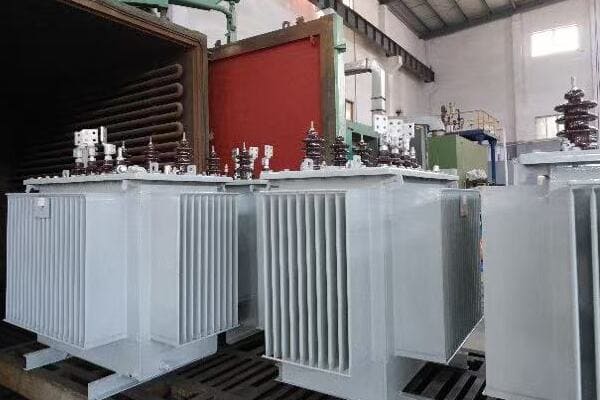
Diving Deeper into Transformer Pricing Factors
Let’s explore each of these factors in more detail:
1. Rated Capacity (kVA)
Impact on pricing:
- Higher kVA ratings require larger cores and windings
- More material used increases overall cost
- Economies of scale can affect pricing for very large units
I once worked on a project comparing costs for a 500 kVA vs a 1000 kVA transformer. The price didn’t simply double; the larger unit was about 70% more expensive due to economies of scale in manufacturing.
2. Voltage Level
How it affects cost:
- Higher voltages require more insulation
- Special designs needed for extra high voltage (EHV) transformers
- Safety features increase with voltage level
3. Cooling Method
Price implications of different cooling types:
- Oil-immersed generally cheaper for larger ratings
- Dry-type more expensive but preferred for indoor use
- Advanced cooling methods (e.g., forced oil) add to cost
4. Winding Material
Copper vs. aluminum considerations:
- Copper windings more expensive but offer better efficiency
- Aluminum cheaper but may require larger size for same rating
- Material prices fluctuate with global market trends
Here’s a comparison table of winding materials:
| Aspect | Copper Windings | Aluminum Windings |
|---|---|---|
| Initial Cost | Higher | Lower |
| Efficiency | Better | Good |
| Size for Same Rating | Smaller | Larger |
| Weight | Heavier | Lighter |
| Long-term Cost | Lower due to efficiency | Higher due to losses |
In my experience, the choice of winding material can significantly impact both initial and long-term costs. I recall a project where we compared copper and aluminum windings for a large industrial transformer. While the aluminum option was 15% cheaper initially, our calculations showed that the copper windings would save the client over $50,000 in energy costs over 20 years due to lower losses.
The impact of standards and certifications on transformer pricing is often underestimated. In a recent international project, we had to ensure compliance with both IEC and ANSI standards. The additional testing and documentation required added about 8% to the overall cost of the transformers. However, this investment was crucial for meeting global safety standards and enabling the client to use the equipment worldwide.
Enclosure type is another factor that can significantly influence price. I worked on a project in a coastal area where we needed specially designed enclosures to withstand salt spray and high humidity. The corrosion-resistant materials and additional sealing measures increased the transformer cost by nearly 20%, but were essential for ensuring long-term reliability in that environment.
The location of installation and shipping requirements can have a surprising impact on the total cost. In a remote mining project I consulted on, the transportation costs for the transformers nearly equaled their purchase price due to the difficult terrain and special handling required. This experience highlighted the importance of considering logistical factors in the overall budget for transformer procurement.
Energy efficiency ratings are becoming an increasingly important factor in transformer pricing. In a recent project for a large data center, we opted for high-efficiency transformers that were about 25% more expensive than standard models. However, the energy savings calculated over the expected lifespan of the transformers more than justified the additional upfront cost.
The advent of smart grid technologies is introducing new pricing considerations for transformers. I’m currently working on a project implementing transformers with advanced monitoring and communication capabilities. While these smart features add about 15% to the base price, they offer significant benefits in terms of predictive maintenance and grid integration, potentially reducing long-term operational costs.
Lastly, the impact of market demand and raw material prices cannot be overlooked. During a recent period of copper price volatility, we saw transformer quotes fluctuate by up to 10% within a few months. This experience underscored the importance of timing and market awareness in large transformer purchases.
Understanding the factors that influence transformer pricing is crucial for making informed procurement decisions. From basic considerations like capacity and voltage to more complex factors such as efficiency ratings and smart features, each aspect plays a role in determining the final cost. By carefully evaluating these factors in the context of your specific needs and long-term operational requirements, you can make a transformer purchase that balances initial cost with long-term value and performance.
Common Transformer Types and Their Average Price Ranges?
Are you finding it challenging to budget for your transformer needs? The wide variety of transformer types and their price ranges can be overwhelming. But what if you had a clear overview of common transformer types and their costs to guide your decision-making?
Transformer Type | Typical Capacity | Average Price Range (USD)
Dry-Type Transformer | 100 kVA | $1,200 – $1,800
Oil-Immersed Transformer | 500 kVA | $4,000 – $6,000
Pad-Mounted Transformer | 1000 kVA | $7,000 – $10,000
Pole-Mounted Transformer | 75 kVA | $1,000 – $1,500
Step-Up Power Transformer | 2000 kVA | $12,000 – $18,000
Exploring Transformer Types and Their Price Ranges
Let’s dive deeper into each transformer type and understand what influences their pricing:
1. Dry-Type Transformers
Characteristics and pricing factors:
- Used in indoor settings where fire safety is crucial
- No oil cooling, reducing maintenance and environmental risks
- Higher initial cost but often lower total cost of ownership
I once worked on a hospital renovation project where we chose dry-type transformers despite their higher upfront cost. The reduced fire risk and lower maintenance needs made them the most cost-effective choice in the long run.
2. Oil-Immersed Transformers
Key features affecting price:
- Excellent cooling properties allow for compact designs
- Lower cost for higher capacities compared to dry-type
- Additional costs for oil containment and fire suppression systems
3. Pad-Mounted Transformers
Pricing considerations:
- Designed for outdoor use in urban or commercial areas
- Tamper-resistant and aesthetically pleasing enclosures add to cost
- Often include advanced safety and monitoring features
4. Pole-Mounted Transformers
Cost factors:
- Commonly used in residential and rural power distribution
- Designed for overhead power lines, affecting construction and installation costs
- Generally lower capacity and lower cost than other types
5. Step-Up Power Transformers
Price influences:
- Used in power generation to increase voltage for long-distance transmission
- Higher voltage ratings require more expensive insulation and safety features
- Often custom-designed, impacting cost
Here’s an expanded table with more details on transformer types and their applications:
| Transformer Type | Typical Application | Key Advantages | Price Influencing Factors |
|---|---|---|---|
| Dry-Type | Indoor, commercial buildings | Fire safe, low maintenance | Resin materials, ventilation needs |
| Oil-Immersed | Outdoor substations, industrial | Efficient cooling, high capacity | Oil quality, tank design |
| Pad-Mounted | Urban distribution, campuses | Aesthetics, safety | Enclosure design, security features |
| Pole-Mounted | Residential areas, rural | Easy installation, cost-effective | Mounting hardware, weather resistance |
| Step-Up Power | Power plants, renewable energy | High voltage capability | Insulation level, custom design |
In my experience, the choice of transformer type can significantly impact both initial costs and long-term expenses. I recall a project for a large data center where we compared dry-type and oil-immersed transformers. While the oil-immersed units were about 20% cheaper initially, the additional fire suppression systems required and higher insurance premiums made the dry-type transformers more economical over a 15-year period.
The impact of location on transformer pricing is often underestimated. In a recent project in a coastal area, we had to use specially designed pad-mounted transformers with enhanced corrosion resistance. These units cost about 30% more than standard models but were essential for ensuring long-term reliability in the salt-laden environment.
Energy efficiency regulations are increasingly affecting transformer pricing. I worked on a project where new efficiency standards had just been implemented. The compliant transformers were about 15% more expensive, but the energy savings were calculated to offset this cost within 7 years of operation.
The advent of smart grid technologies is introducing new considerations in transformer selection and pricing. In a recent urban development project, we implemented pad-mounted transformers with advanced monitoring and communication capabilities. While these smart features added about 25% to the base price, they offered significant benefits in terms of grid management and predictive maintenance.
Custom requirements can significantly impact transformer pricing. I once consulted on a project for a specialized manufacturing facility that required transformers with unique voltage ratios. The custom design and limited production run increased the cost by nearly 50% compared to standard units of similar capacity.
The choice between single-phase and three-phase transformers can also affect pricing. In a residential development project, we found that using multiple single-phase pole-mounted transformers was more cost-effective than fewer, larger three-phase units. This approach also provided greater flexibility in load management.
Lastly, the impact of market demand and raw material prices on transformer costs cannot be overlooked. During a recent period of steel price volatility, we saw quotes for pad-mounted transformers fluctuate by up to 15% within a few months. This experience highlighted the importance of timing and market awareness in large transformer purchases.
Understanding the common types of transformers and their price ranges is crucial for effective budgeting and project planning. Each type has its own advantages and cost considerations, influenced by factors ranging from design and materials to installation requirements and long-term efficiency. By carefully evaluating these factors in the context of your specific application and operational needs, you can make an informed decision that balances initial cost with long-term value and performance.
How to Choose the Right Transformer for Your Power Needs?
Are you feeling overwhelmed by the myriad of transformer options available? Selecting the right transformer for your specific power needs can be a daunting task. But what if you had a clear roadmap to guide you through this critical decision-making process?
Choosing the right transformer involves assessing your power requirements, considering environmental factors, evaluating efficiency needs, and understanding future expansion plans. Key steps include calculating load capacity, determining voltage requirements, considering installation location, and evaluating the total cost of ownership, including energy efficiency and maintenance needs.
A Step-by-Step Guide to Selecting the Right Transformer
Let’s break down the process of choosing the right transformer:
1. Assess Your Power Requirements
Start by:
- Calculating your total load requirements in kVA
- Determining voltage levels needed (primary and secondary)
- Considering load growth and future expansion plans
I once worked with a manufacturing plant that underestimated their future power needs. Within two years, they had to replace their transformer at significant cost. Now, I always advise clients to plan for at least 25% additional capacity for future growth.
2. Consider Environmental Factors
Evaluate:
- Indoor vs outdoor installation
- Temperature and humidity conditions
- Exposure to contaminants or corrosive elements
- Noise restrictions in the area
3. Evaluate Efficiency Requirements
Consider:
- Energy efficiency standards and regulations
- Long-term energy costs vs initial investment
- Peak efficiency points relative to your typical load profile
4. Determine the Appropriate Transformer Type
Choose based on:
- Dry-type vs oil-filled considerations
- Single-phase or three-phase requirements
- Special features needed (e.g., taps, monitoring systems)
Here’s a decision matrix to help guide your transformer selection:
| Requirement | Dry-Type Transformer | Oil-Filled Transformer |
|---|---|---|
| Indoor Use | Excellent | Requires special considerations |
| Outdoor Use | Possible with enclosure | Excellent |
| Fire Safety | High | Moderate (with safeguards) |
| Maintenance | Low | Moderate |
| Initial Cost | Higher | Lower for larger sizes |
| Efficiency | Good | Excellent for larger sizes |
| Size/Weight | Larger/Heavier | Compact/Heavier |
In my experience, the choice between dry-type and oil-filled transformers often comes down to installation location and safety requirements. I recall a project for a high-rise building where we opted for dry-type transformers despite their higher cost. The reduced fire risk and easier compliance with building codes made them the ideal choice for this application.
The impact of harmonics on transformer selection is often overlooked. In a recent data center project, we had to carefully consider the high harmonic content generated by the IT equipment. We ended up selecting K-rated transformers, which were about 20% more expensive but provided crucial protection against harmonic-induced overheating and potential failures.
Efficiency considerations can significantly influence transformer choice and long-term costs. I worked on an industrial project where we compared standard efficiency transformers with high-efficiency models. The high-efficiency units were 15% more expensive upfront but were calculated to save over $100,000 in energy costs over a 20-year lifespan, making them the more economical choice in the long run.
The importance of proper sizing cannot be overstated. I once consulted on a project where the client insisted on oversizing their transformer by 100% "just to be safe." This not only increased their initial costs unnecessarily but also led to poor efficiency as the transformer was constantly operating well below its optimal load. We eventually rightsized the transformer, improving efficiency and reducing operating costs.
Special applications may require unique transformer features. In a recent renewable energy project, we needed transformers that could handle the variable output of wind turbines. We selected units with on-load tap changers, which allowed for voltage adjustment under load. While more expensive, these transformers were crucial for maintaining power quality and grid stability.
The physical space available for installation can also drive transformer selection. In a retrofit project for an urban substation, space constraints led us to choose a compact cast resin transformer over a traditional oil-filled unit. Although more expensive, its smaller footprint and reduced fire risk made it the only viable option for the limited space available.
Lastly, the importance of considering total cost of ownership in transformer selection cannot be overstated. I recently worked with a client who was initially attracted to the lower purchase price of a standard efficiency transformer. However, after we calculated the energy costs over the expected 30-year lifespan of the unit, it became clear that a premium efficiency model would save them over $200,000 in the long run, despite a 30% higher initial cost.
Choosing the right transformer for your power needs requires careful consideration of multiple factors, from basic electrical requirements to long-term efficiency and environmental considerations. By methodically evaluating these aspects and considering both immediate needs and future growth, you can select a transformer that not only meets your current requirements but also provides long-term value and reliability. Remember, the right choice often balances initial cost with long-term benefits, ensuring optimal performance and cost-effectiveness throughout the transformer’s lifecycle.
What to Ask Your Supplier Before Purchasing a Transformer?
Are you preparing to purchase a transformer but unsure about what critical questions to ask your supplier? Making an informed decision requires the right information, but what exactly should you be asking to ensure you’re getting the best transformer for your needs?
**Key questions to ask your transformer supplier include:
- What is the transformer’s efficiency rating and expected losses?
- Can you provide test reports for similar units?
- What warranty and after-sales support do you offer?
- How does the transformer comply with current and upcoming efficiency standards?
- What are the delivery timeframes and installation support options?
- Can you provide references from similar projects?**
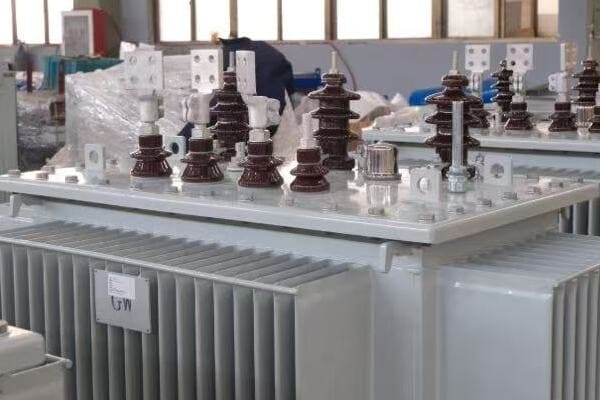
Essential Questions for Your Transformer Supplier
Let’s explore these questions in more detail and understand why they’re crucial:
1. Efficiency and Losses
Ask about:
- No-load and full-load losses
- Efficiency at different load levels
- Comparison with industry standards
I once worked with a client who overlooked asking about transformer losses. They ended up with a unit that, while meeting their basic requirements, had higher than average losses. This resulted in significantly higher operating costs over time.
2. Test Reports and Certifications
Inquire about:
- Type test reports
- Routine test results
- Compliance with relevant standards (e.g., IEEE, IEC)
3. Warranty and Support
Discuss:
- Length and terms of warranty
- Availability of spare parts
- Response time for technical support
4. Regulatory Compliance
Ask about:
- Current efficiency standard compliance
- Readiness for upcoming regulations
- Any additional certifications
5. Logistics and Installation
Clarify:
- Expected delivery timeline
- Shipping and handling requirements
- Installation support and guidelines
Here’s a checklist of questions to ask your supplier:
| Category | Questions to Ask |
|---|---|
| Technical Specifications | – What are the exact voltage ratings? – What is the impedance percentage? – What cooling method is used? |
| Performance | – What is the expected lifespan? – How does it perform under overload conditions? – What is the temperature rise at full load? |
| Customization | – Can taps be adjusted on-site if needed? – Are custom enclosures available? – Can additional monitoring features be added? |
| Environmental | – What is the operating temperature range? – How is the unit protected against environmental factors? – What are the noise levels at various loads? |
| Cost and Value | – What is the total cost of ownership over X years? – Are there any ongoing maintenance costs? – How does the price compare to similar models in the market? |
In my experience, the depth of a supplier’s responses to these questions can be very telling. I recall a project where we were comparing two suppliers for a critical transformer. One supplier provided detailed, data-backed answers to our efficiency questions, while the other gave vague assurances. We chose the first supplier, and their transformer has been operating flawlessly for years, with energy savings matching their projections.
The importance of asking about test reports cannot be overstated. In a recent high-stakes project, we requested detailed test reports from our shortlisted suppliers. One supplier’s reports revealed minor but consistent quality issues in their recent productions. This information was crucial in our decision-making process and potentially saved us from significant operational issues down the line.
Warranty and support questions often reveal much about a supplier’s confidence in their product. I once worked with a client who chose a supplier offering an unusually long warranty period. This decision paid off when a rare manufacturing defect was discovered two years into operation. The supplier honored the warranty, replacing the unit at no cost and minimizing downtime.
Regulatory compliance is an area where forward-thinking questions can save future headaches. In a project for a rapidly growing tech company, we specifically asked suppliers about their readiness for upcoming efficiency standards. The chosen supplier not only met current standards but had already designed their transformers to comply with regulations that were still two years away from implementation. This foresight ensured our client wouldn’t need to replace their transformers prematurely to meet new regulations.
Logistics and installation support can make a significant difference, especially in challenging projects. I recall a remote installation where we chose a supplier partly based on their comprehensive installation support package. Their expertise in handling and installing the transformer in a difficult terrain proved invaluable, saving time and preventing potential damage during installation.
Asking about customization options can lead to innovative solutions. In a recent project for a data center with strict space constraints, we asked suppliers about custom enclosure options. One supplier proposed a unique vertical design that fit our space requirements perfectly while maintaining optimal cooling efficiency. This custom solution, which we might have missed without asking, proved to be ideal for the project.
Lastly, don’t underestimate the value of asking for references from similar projects. In a critical infrastructure project, we contacted references provided by our top two suppliers. The feedback we received about real-world performance and after-sales support was instrumental in our final decision, leading us to a supplier whose transformers had a proven track record in similar high-stress environments.
Asking the right questions before purchasing a transformer is crucial for making an informed decision. These questions help you understand not just the technical specifications, but also the long-term value, reliability, and support you can expect. By thoroughly vetting your suppliers with these questions, you can ensure that you’re not just buying a transformer, but investing in a solution that will meet your power needs efficiently and reliably for years to come. Remember, a well-informed buyer is more likely to make a choice that balances cost, performance, and long-term value effectively.
Final Tips for Saving Cost Without Sacrificing Quality?
Are you looking to optimize your transformer purchase without compromising on quality? Balancing cost-effectiveness with performance can be challenging. But what if you could save money while still ensuring you get a reliable, high-quality transformer?
**Key tips for cost-effective transformer purchases:
- Consider total cost of ownership, not just initial price
- Opt for higher efficiency models for long-term energy savings
- Explore refurbished options for non-critical applications
- Bundle purchases for volume discounts
- Time your purchase with market trends in raw materials
- Invest in proper maintenance to extend transformer life
- Consider standardization across your facility for easier management**
Strategies for Cost-Effective Transformer Procurement
Let’s delve into these cost-saving strategies while maintaining quality:
1. Focus on Total Cost of Ownership (TCO)
Consider:
- Initial purchase price
- Energy costs over the transformer’s lifespan
- Maintenance and potential replacement costs
I once worked with a client who initially balked at the higher price of a high-efficiency transformer. After we calculated the TCO over 20 years, including energy savings, they realized it would save them over $50,000 compared to the cheaper, less efficient model.
2. Prioritize Energy Efficiency
Look for:
- Transformers exceeding minimum efficiency standards
- Models with low no-load and load losses
- Designs optimized for your typical load profile
3. Explore Refurbished Options
Consider for:
- Non-critical applications
- Temporary or short-term needs
- Backup or redundant systems
4. Leverage Volume Purchasing
Strategies include:
- Standardizing transformer specifications across your facility
- Coordinating purchases with other departments or projects
- Negotiating long-term supply agreements
Here’s a comparison of potential savings strategies:
| Strategy | Potential Savings | Best For | Considerations |
|---|---|---|---|
| High-Efficiency Models | 10-20% on energy costs | Long-term installations | Higher upfront cost |
| Refurbished Units | 30-50% on purchase price | Non-critical applications | May have shorter lifespan |
| Volume Purchasing | 5-15% on bulk orders | Large projects or organizations | Requires standardization |
| Proper Maintenance | Extends life by 25-50% | All installations | Requires consistent upkeep |
| Market Timing | 5-10% on raw materials | Flexible purchase timelines | Requires market knowledge |
In my experience, the most effective cost-saving measures often come from a combination of strategies. I recall a large industrial project where we implemented several of these approaches simultaneously. We standardized transformer specifications across the facility, which allowed for volume purchasing. We also chose high-efficiency models and implemented a rigorous maintenance program. The combined effect was a 22% reduction in overall transformer-related costs over a 10-year period compared to their previous approach.
The timing of purchases can significantly impact costs. In a recent project, we closely monitored copper prices, which were experiencing high volatility. By timing our purchase during a dip in the market, we saved nearly 8% on the transformer cost. While this requires some flexibility in project timelines, the savings can be substantial for large orders.
Proper maintenance is often overlooked as a cost-saving measure. I worked with a facility that had been replacing transformers every 15-20 years. By implementing a comprehensive maintenance program, including regular oil testing and proactive repairs, we extended the average lifespan of their transformers to over 30 years. The savings in replacement costs far outweighed the maintenance expenses.
Standardization across facilities can lead to significant savings. In a multi-site project for a retail chain, we standardized transformer specifications across all their locations. This not only allowed for better volume pricing but also simplified maintenance and spare parts management, leading to long-term operational cost reductions.
Exploring alternative cooling methods can also yield savings. In a recent data center project, we compared traditional oil-cooled transformers with more expensive cast resin dry-type units. While the dry-type transformers had a higher upfront cost, they eliminated the need for costly oil containment systems and reduced fire suppression requirements, resulting in overall project savings.
The choice of winding material can impact both initial cost and long-term savings. In a cost-sensitive project, we opted for aluminum windings instead of copper. While slightly less efficient, the significant cost savings on the material made it the more economical choice for this particular application, especially given the client’s specific load profile and energy costs.
Lastly, don’t underestimate the value of a good relationship with your supplier. I’ve seen cases where long-term partnerships led to preferential pricing, priority in tight supply situations, and valuable technical support that prevented costly mistakes. Cultivating these relationships can lead to savings and benefits that go beyond mere price negotiations.
Saving costs on transformer purchases without sacrificing quality requires a multifaceted approach. By considering total cost of ownership, prioritizing efficiency, exploring all available options, and implementing smart purchasing strategies, you can significantly reduce both upfront and long-term costs. Remember, the goal is to balance initial savings with long-term value and reliability. A well-thought-out procurement strategy not only saves money but also ensures you get a transformer that meets your needs efficiently and reliably for years to come.
Conclusion
Understanding transformer purpose, pricing factors, and selection criteria is crucial for making informed purchases. By considering total cost of ownership, efficiency, and long-term needs, buyers can select transformers that offer the best value and performance for their specific applications.
Recent Post
Quick Message
Request A free quote
We'd like to work with you
- +86 15558785111
- chbebgroup@chbebpower.com
- +86 15558785111
What We Do
CHINA BEI ER BIAN (CHBEB) GROUP, with 218 million in registered capital, originated from Beijing Beierbian Transformer Group. Headquartered in Beijing for R&D, it operates major production bases in Nanjing and Yueqing, producing high-quality products.
Latest Post
Latest Product
Contact Us
- +86 15558785111
- chbebgroup@chbebpower.com
- +86 15558785111
BeiJing
No 3,RongJing East Road,BeiJing Economic Technological Development Area,BeiJing,China
JiangSu
No 7️Xiangfeng Road,Jiangning,NanJing,JiangSu,China
WenZhou
No.211, Wei 16 Road, Industrial Zone, Yueqing, Wenzhou, Zhejiang, China.
XiangYang Industrial Zone ,YueQing,WenZhou,ZheJiang,China

